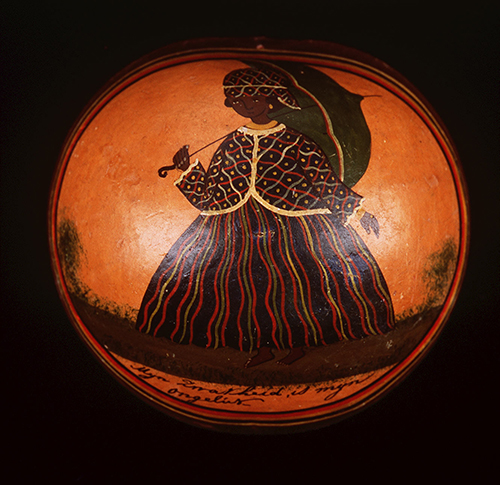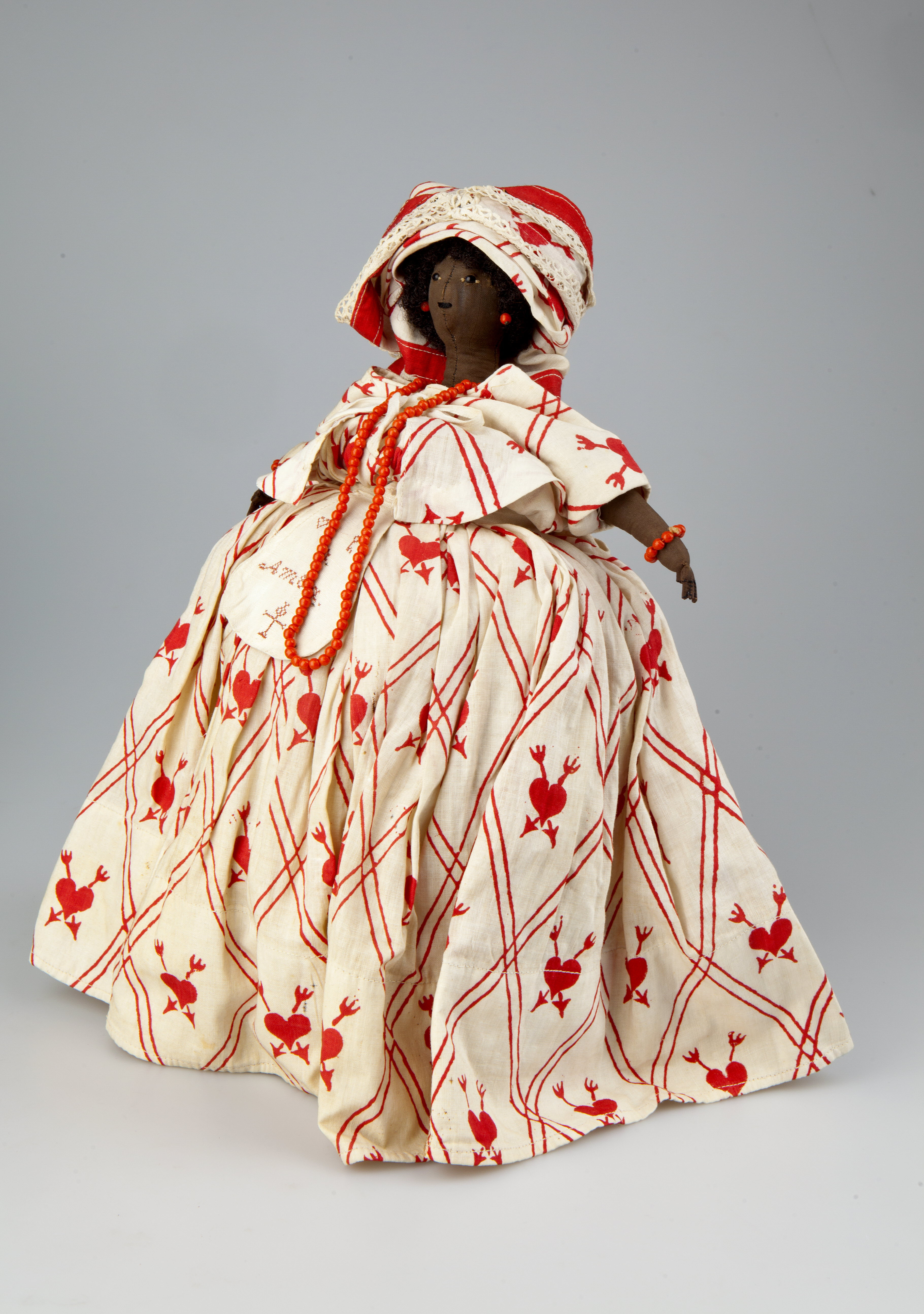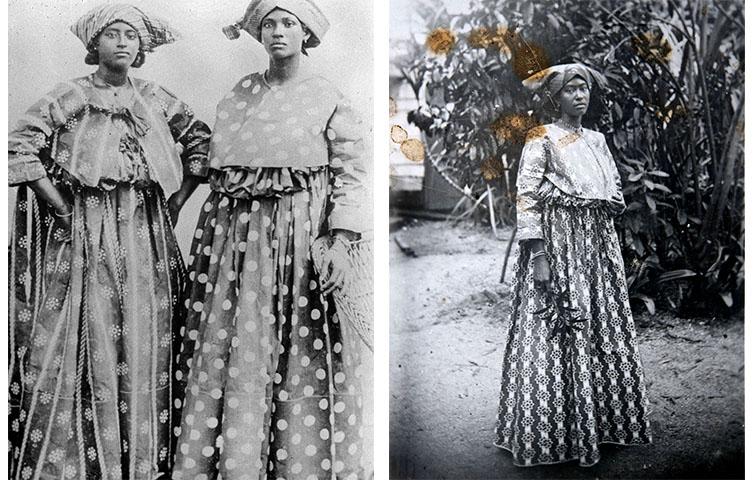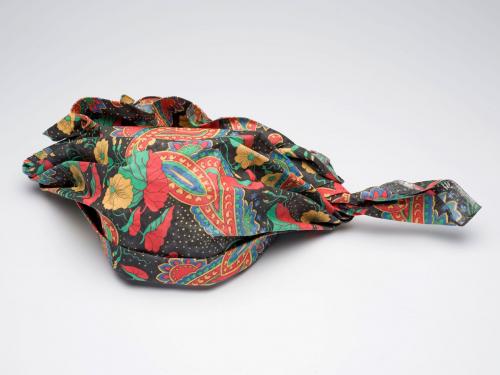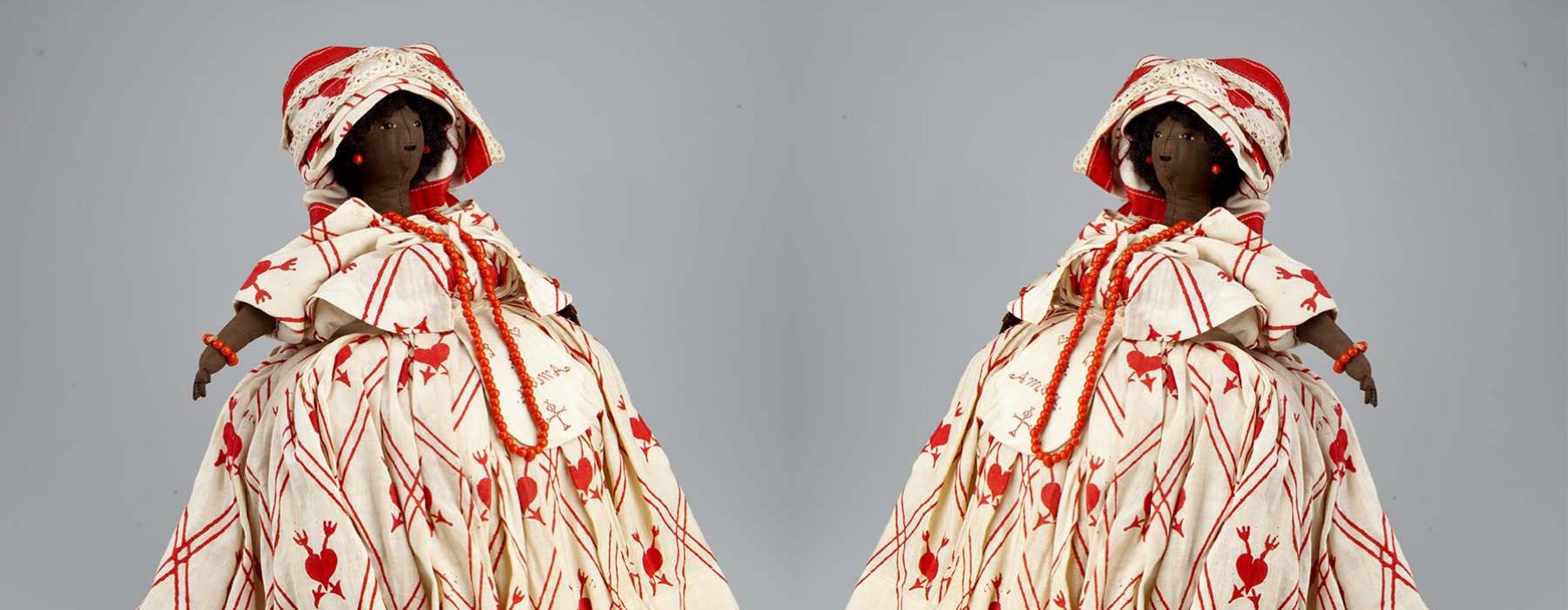
Plantation holder Gaspar van Breugel went to a party of enslaved workers on his Clifford Kocqshoven plantation in 1824, a party which turned into a winti ritual. There was music and dancing for three days and nights. This inspired him to have a set of miniature instruments and six dolls depicting the dancers made. He wrote that the women were ‘dressed like a pattern book’. He gave these dolls to his daughter and nieces to play with, with the idea of showing how well dressed his enslaved workers were but in reality this was not so. These were special clothes for special occasions.
